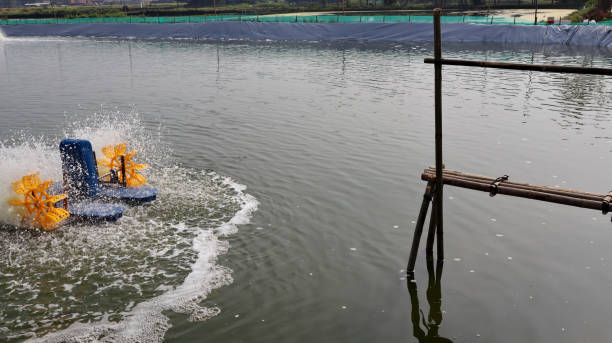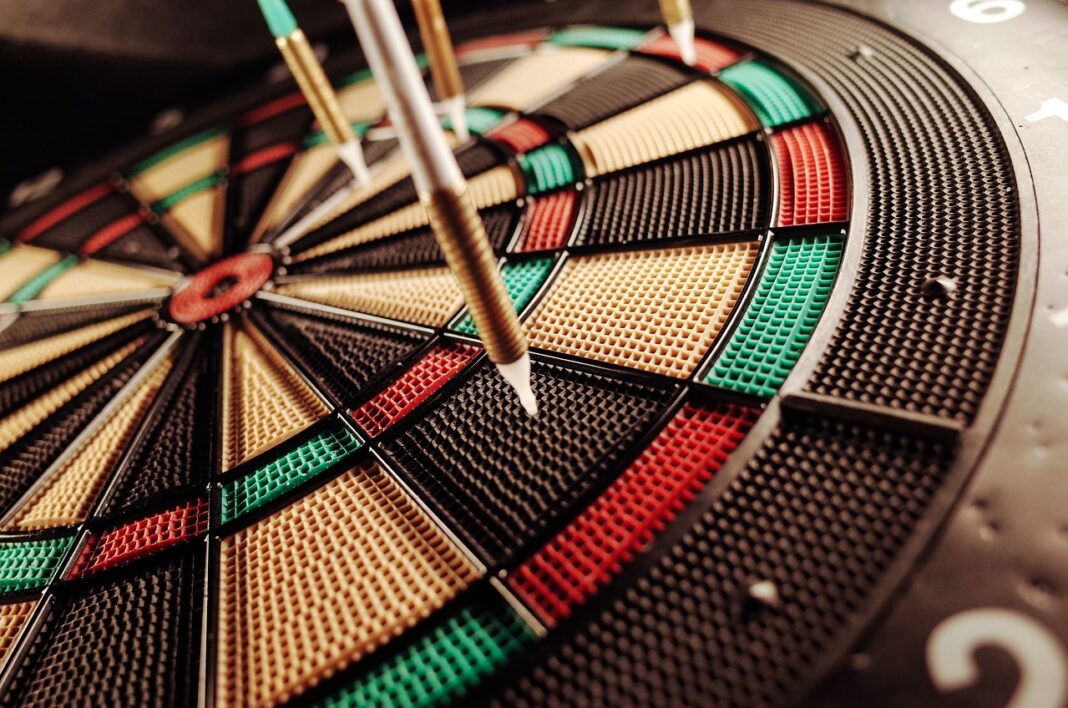The health of a pond is intertwined with the levels of oxygen that exist within it, and a pond that lacks adequate oxygen will suffer greatly. The poor water quality that plagues ponds can stem from a few main factors: the presence of stagnant water, a lack of oxygen, or the accumulation of organic waste.
And if any of these kinds of water problems exist in your pond, it’s going to get murky, stink, and might even cause some fish to die if they reside in it. But moving water and a good distribution of oxygen are both important to the formation of a balanced aquatic environment, and one way to ensure that your pond has both is to install an aerator. This will provide algae control for ponds and make sure that your water stays clean.
1. Pond Aeration Systems
There are two primary kinds of pond aeration systems: surface aerators and bottom diffuser systems. Surface aerators are suitable for ponds that are less than 6 feet deep. They work by producing an action at the surface of the pond – usually in the form of splashing or bubbling – that oxygenates not only the surface but also the upper 3 to 4 feet of water. That’s the depth at which you’re most likely to find fish.
Bottom diffuser systems, on the other hand, release air bubbles from the bottom of the pond. The released bubbles rise to the surface, creating currents that mix the water from top to bottom and ensure that all layers get evenly oxygenated. This type of aeration system is ideal for deeper ponds and ponds that are not naturally spring-fed.
2. Planning Your Aeration System Setup
Proper planning guarantees efficient installation and prevents problems like uneven aeration or electrical hazards. Here’s what you need to do before getting started:
Step 1: Assess Your Pond Size and Depth
- To gauge your pond’s dimensions, estimate the surface area (length × width) and the average depth.
- Know where the deep spots are: This information will help you choose the right aerator—bottom diffusers for deep ponds and surface aerators for shallow ones.
Step 2: Select the Appropriate Aerator Type
- For larger ponds (½ acre or more), where maximum algae control for ponds is required, a multiple-diffuser system is often required.
- Deep ponds (6 feet or more) benefit from bottom diffusers.
- Shallow ponds are best served by surface aerators or fountains.
Step 3: Determine an Optimal Location for the Compressor
- Locate the air compressor on flat, dry land near the pond, within 100 feet if possible to avoid airflow loss.
- Choose a shaded or ventilated location to avoid overheating the compressor.
- Use GFCI electrical outlets for safety.
Step 4: Plan Your Tubing Layout
- Route the tubing efficiently. Avoid kinks and bends, which can reduce airflow.
- Prevent the tubing from floating; either weight it or anchor it.
3. Required Tools and Materials
Prior to installation, ensure that you have the following tools and materials ready:
- Pond aeration kit (with compressor, tubing, and diffusers)
- Extension cords (rated for outdoor use)
- Check valves
- Anchors that can be weighted down to hold your tubing in place
- Hose clamps (if needed)
- A good shovel (for minor trenching, if you need to bury any tubing)
- Zip ties or cable ties (to secure the tubing)
- GFCI outlet (if one is not already installed)
4. Complete Installation Process
Follow these simple steps to install the pond aerator:
Step 1: The Compressor
You want to pick a location that is close to your pond but is also dry and level. The appearance of the spot in question matters if you don’t want to ruin the aesthetic appeal of your pond. Make sure that the spot you choose is both stable and level.
Once you have picked the spot and it is dry, you will want to make it level as well. A couple of paver stones underneath your compressor will get the job done, if it is not already level.
Step 2: Join Tubing to the Compressor
Using the hose clamps or fittings provided in the aeration kit, connect the tubing to the compressor’s air outlet. Place check valves in the tubing to prohibit backflow of water during shutdowns. Make certain that the connection of tubing to compressor is air-tight so that no compressed air escapes.
Step 3: Position the Tubing and Diffuser in the Pond.
The next step is to set up the tubing and diffuser in the pond. Begin by laying out the pond tubing neatly from the pond’s edge. Should the tubing need to take a turn, you may use a shallow trench to protect it from external forces that might damage it.
After the tubing is laid out, you’ll need to attach the diffuser end to the tubing and then use some weights to anchor the tubing so it stays submerged in the pond as you lower the diffuser into it.
Once the diffuser is in the pond, make sure to position it in the pond’s deep section. If you have more than one diffuser, don’t forget to space them evenly for maximum effect.
Step 4: Testing the Aeration System
Activate the compressor and watch the airflow. Bubbles should be rising from the diffuser. If they aren’t, it might be time to call a professional. If the bubbles are appearing but the airflow isn’t strong enough, increase the pressure with the air regulator until the bubbles are just right. If the bubbles are too forceful, decrease the pressure.
Step 5: Adjust and Fine-Tune the System
Now, let’s move on to the critical next step: fine-tuning the system. To maximize efficiency, double-check these details:
- The tubing should be flat on the bottom of the pond. If it’s not, you run the risk of kinking; creating a block that reduces airflow to the diffuser and, therefore, oxygen, inhibiting the algae control for ponds.
- The compressor should be powerful enough to move the needed volume of air through the system. If the bubbles are coming through too weak, either the compressor itself or one of the many tubes that connect the compressor to the diffusers is not airtight.
- The diffusers should be located properly throughout the pond to maximize the areas affected by the increased oxygen. If the algae are really bad in a certain area of the pond, and the oxygen levels are low throughout, then you may need to move a couple of the diffusers around to make sure you’re targeting problem areas.
5. Maintenance and Troubleshooting
1. Clean the compressor air filters monthly. Dust and dirt will clog the filters with enough time, which will make the compressor overwork and possibly shorten its life. If the compressor ever makes an unusual sound, such as loudness or rattling that it normally does not make, check to see if the filters are clogged.
2. Likewise, inspect tubing and connections for tightness and leaks. If you find any, replace the compromised hose or connection immediately.
3. Make adjustments for the different seasons. If you live in a place where the ponds freeze, you have to take special precautions to keep your pond from freezing solid and threatening the life forms that call it home.
Switch to a cold-weather aeration system when the weather turns cold. They fall into two categories: one is a de-icer for when the pond is actually frozen and one is a bubbler for when it is not frozen but could become so.
6. Staying Safe
- Maintain a safe distance between your electrical connections and any water sources.
- The compressor needs to be in a well-ventilated place to avoid overheating.
- Maintenance and troubleshooting of the compressor can only be done safely when the unit is unplugged.
7. The Rewards of a Properly Installed Aerator
Pond aerators offer numerous long-term rewards:
- Oxygen levels increase: This is of utmost importance for fish and beneficial bacteria.
- Algae growth is curbed: An aerated pond does not stagnate, and that is the key to algae control for ponds and preventing harm to the ecosystem.
- Pond odors are reduced: More than anything else, oxygen is a pond’s best deodorant, promoting the breakdown of organic matter.
- Water clarity is improved: An aerobically functioning pond does not allow sediment to accumulate.
Aerators Offer Algae Control for Ponds and Many Other Benefits
The setup of a pond aerator is a simple but crucial process for keeping the water healthy. Planning, careful installation, and an eye toward maintenance will not only extend the life of the aerator but also enhance the appearance and the very quality of the water in a backyard pond.
If you follow correctly follow each of these steps presented in today’s guide, you will end up with water that is clear and well-oxygenated, supports a wide range of organisms, and does (almost) everything a small version of an aquatic ecosystem should do to stay in balance. This not only provides you with piece of mind that your pond is being properly taken care of; it will also save you significant expenses down the road.


